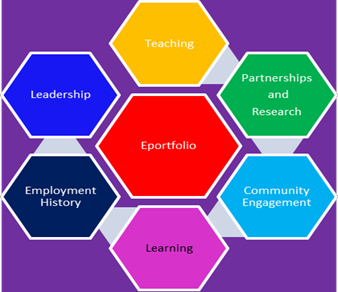A teaching portfolio may include, for example:
- details of your teaching responsibilities including, if applicable, supervision of honours or postgraduate research students
- description and reflection of your educational practice/philosophy;
- your publications on scholarship of teaching;
- demonstration of how scholarship informs your teaching, for example membership of professional associations or actively participating in professional development activities and programs;
- evidence of the nexus between teaching and learning and your research and scholarship;
- evidence of innovative teaching approaches informed by your reflection and learning;
- your teaching awards, grants, or other measures of recognition;
- samples of unit outlines, course materials, and assessment proformas or rubrics, demonstrating changes implemented in response to student feedback and reflection on your rationale, activities and assessment instruments aligned to learning outcomes;
- your student ratings and comments, reports from others, self-assessment, and team deliberations;
- administrative responsibilities in regards to units of study, student feedback, course co-ordination, national roles and honours or postgraduate student supervision.


